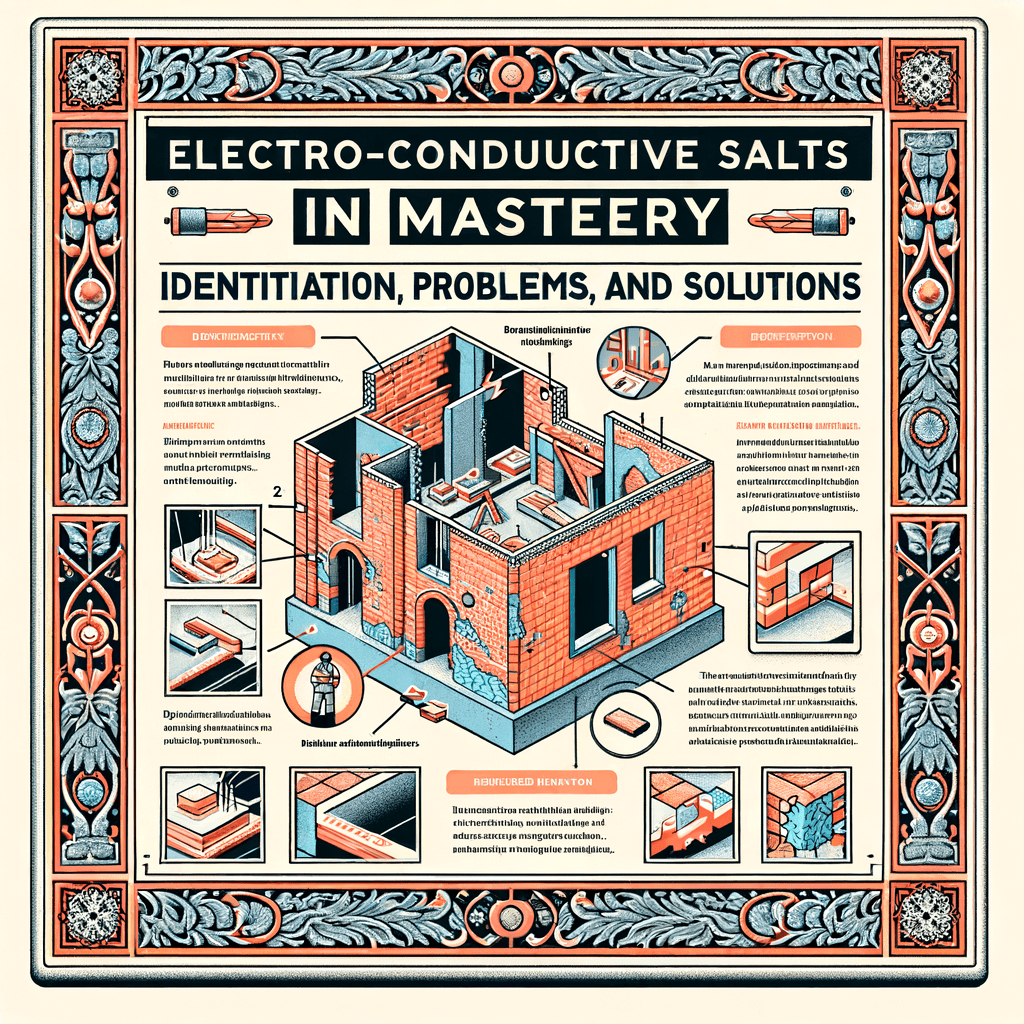Understanding Electro-Conductive Salts in Masonry: Identification, Issues, and Solutions
What Are Electro-Conductive Salts?
Electro-conductive salts are naturally occurring minerals that can be found in masonry materials such as bricks, stones, and mortar. These salts, which include chlorides, nitrates, and sulphates, can become problematic when they dissolve in water and migrate through the masonry. When the water evaporates, the salts crystallise on the surface, leading to a range of issues that can compromise the structural integrity and aesthetic appeal of a building.
How Electro-Conductive Salts Enter Masonry
Sources of Electro-Conductive Salts
Electro-conductive salts can enter masonry through various sources:
- Groundwater: Salts present in the soil can be absorbed by masonry through capillary action.
- Building Materials: Some construction materials inherently contain salts.
- Environmental Factors: Coastal areas with high salt content in the air can contribute to salt ingress.
- De-icing Salts: In colder climates, salts used for de-icing roads and pavements can be absorbed by nearby masonry.
Mechanism of Salt Migration
The process of salt migration involves the following steps:
- Absorption: Water containing dissolved salts is absorbed by the masonry.
- Migration: The water moves through the porous structure of the masonry.
- Evaporation: As the water reaches the surface and evaporates, the salts are left behind.
- Crystallisation: The salts crystallise on the surface or within the pores of the masonry.
Identifying Electro-Conductive Salts in Masonry
Visual Indicators
One of the most common signs of electro-conductive salts in masonry is efflorescence, a white, powdery deposit that appears on the surface. Other visual indicators include:
- Damp Patches: Persistent dampness on walls, especially near the base.
- Flaking or Spalling: The surface of the masonry may start to flake or crumble.
- Staining: Discolouration or staining on the masonry surface.
Testing for Salts
To confirm the presence of electro-conductive salts, several tests can be conducted:
- Moisture Meter: A moisture meter can detect high levels of moisture within the masonry, indicating potential salt presence.
- Chemical Analysis: Samples of the efflorescence can be analysed to determine the specific types of salts present.
- Electrical Conductivity Test: This test measures the electrical conductivity of the masonry, which increases in the presence of salts.
Issues Caused by Electro-Conductive Salts
Structural Damage
Electro-conductive salts can cause significant structural damage to buildings:
- Crystallisation Pressure: As salts crystallise within the pores of the masonry, they exert pressure that can lead to cracking and spalling.
- Corrosion: Salts can accelerate the corrosion of metal components within the masonry, such as wall ties and reinforcement bars.
- Freeze-Thaw Damage: In colder climates, the presence of salts can exacerbate freeze-thaw cycles, leading to further deterioration.
Aesthetic Damage
The aesthetic appeal of a building can be compromised by the presence of electro-conductive salts:
- Efflorescence: The white, powdery deposits can be unsightly and difficult to remove.
- Staining: Salts can cause permanent discolouration of the masonry surface.
Health Concerns
Damp conditions associated with electro-conductive salts can lead to health issues:
- Mould Growth: Persistent dampness can promote the growth of mould, which can cause respiratory problems and allergies.
- Indoor Air Quality: The presence of salts and dampness can negatively impact indoor air quality.
Fixing Electro-Conductive Salt Issues
Step-by-Step Guide to Remediation
Step 1: Identify and Eliminate the Source of Moisture
The first step in addressing electro-conductive salt issues is to identify and eliminate the source of moisture:
- Inspect for Leaks: Check for leaks in the roof, gutters, and plumbing.
- Improve Drainage: Ensure that the ground around the building slopes away to prevent water accumulation.
- Damp-Proofing: Consider installing a damp-proof course or membrane to prevent rising damp.
Step 2: Remove Existing Salts
Once the source of moisture has been addressed, the next step is to remove the existing salts:
- Brushing: Use a stiff brush to remove loose efflorescence from the surface.
- Washing: Wash the affected area with clean water to dissolve and remove salts. Avoid using excessive water, as this can introduce more moisture.
- Chemical Cleaners: In some cases, specialised

